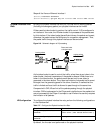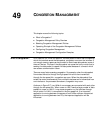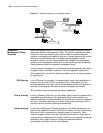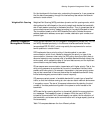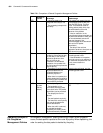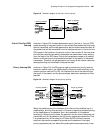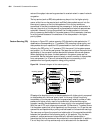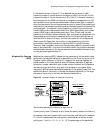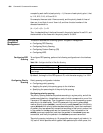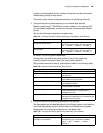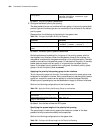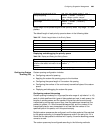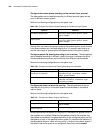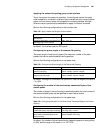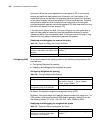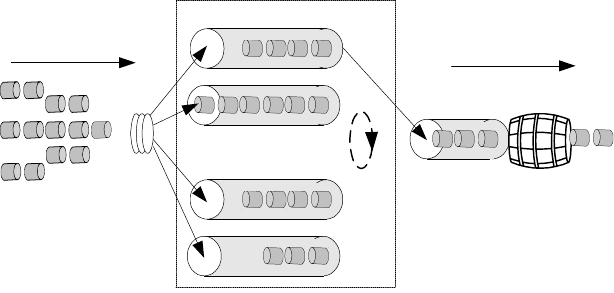
Operating Principle of the Congestion Management Policies 685
In the network shown in Figure 217, it is assumed that the server of LAN 1
transmits the data of the key service to the server of LAN 2, and the PC of LAN 1
transmits the data of the non-key service to PC of LAN 2. If the serial interface to
be connected with the WAN is configured for congestion management with CQ,
and the data flows of the key services between the servers are input to queue A,
while the data flows of the non-key services are input to queue B, the proportional
relationship of the occupied interface bandwidth between queue A and queue B is
configured as 3:1 (for example, during dispatching, queue A may continuously
transmit 6000 bytes of data packets every time, while queue B may continuously
transmit 2000 bytes of data packets every time). Thus, CQ will treat the data
packets of both different services differently. Each time queue A is dispatched, the
data packets are continuously transmitted, before the transmitted bytes are not
less than 6000 or queue A is empty, the next user queue will not be dispatched.
When queue B is dispatched, the condition to stop dispatching is that the
continuously transmitted bytes are not less than 2000 or queue B is empty.
Therefore, when congestion occurs and there are data packets in queues A and B
ready to be transmitted, in the view of the statistic results, the proportion between
the bandwidths allocated to the key services and the bandwidths allocated to the
non-key services is approximately 3:1.
Weighted Fair Queuing
(WFQ)
Weighted fair queuing (WFQ), is based on the guarantee of fair bandwidth delay,
and reflects the weighted value that is dependent on the PI priority carried in the
IP packet header. As shown in
Figure 221, weighted fair queuing classifies the
packets based on the flows (identical source IP address, destination IP address,
source port number, destination port number, protocol number, and ToS packets
that belong to the same flow), with each flow allocated to one queue. When
dequeuing, WFQ allocates the available bandwidth of the egress to each flow. The
smaller the value of the priority is, the less the allocated bandwidth is. The larger
the value of the priority is, the more the allocated bandwidth is.
Figure 221 Schematic diagram of weighted fair queuing
The occupied bandwidth proportion of each flow is:
(its own priority level+1)/(the sum of all of them (the priority levels of the flows+1))
For example, there are 5 types of traffic on an interface, and their priority levels are
0,1,2,3 and 4 respectively, the total quota of the bandwidth is the sum of each
priority plus 1, that is 1 + 2 + 3 + 4 + 5 = 15. The percentage of the bandwidth
incomi ng packet s
queue1 wei ght 1
queue2 wei ght 2
cl assi fyi ng
out goi ng packet s
queueN- 1 wei ght N- 1
queueN wei ght N
queuei ng
interface
¡-¡-



